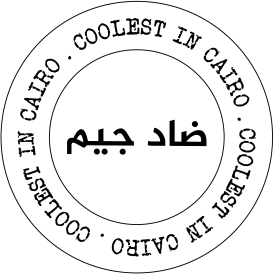Daad Geem is proposing to design a new line of art prints, enamel pins and high quality bookmarks inspired by Ancient Egypt. The line will be created to challenge the conventional souvenirs commonly seen in museum gift shops across the world. They will not be replicas of the collection but will hold their own artistic value. This line will be designed primarily for our local community and backed by informed input from professional historians and archaeologists.
Since this collection is designed with our community in mind. We would like to collaborate with local establishments to display this collection. We are especially eager to collaborate with the Grand Egyptian Museum for the offline launch of this collection. The Grand Egyptian Museum (also known as the Giza Museum) is projected to be the world’s largest single culture museum. The Museum gift shop has since announced that it is keen on working with local artisans and businesses to curate the gift shop’s products.
During one of our meetings with Louise, we mentioned that we were wary of taking creative liberties in our work because we did not want to portray historical inaccuracies. Concerns like combining patterns from several dynastic periods and utilizing the wrong symbolism frequently arose during the sketching phase. Louise not only encouraged us to take creative liberties, she also encouraged us to write some background information about the motifs, patterns and symbols we will use in our designs. I believe that this suggestion has been transformative to this project as it will challenge people to not only think of our collection as souvenirs but also as art pieces as well as educational pieces.

Samples of the british museum Gift shop merch
Museum Gift shops are designed to support museums financially and in terms of education (Vox, 2018). The San Francisco Museum of Modern Art, for instance, reaped a net $6.1 million in store sales for the 2018 fiscal year, which was roughly 7 percent of its total revenue, according to tax filings (robbreport, 2020). Museum Gift shops also rely on “The mere exposure effect” (the decision lab). By subjecting visitors to the same artwork repeated on different things, it not only creates a stronger bond between the artwork and the viewer, it also reinforces the idea that it is important. Also, providing artbooks about the collections on display, extended the viewers’ knowledge about the artwork in the gift shop.
However, some museum goers are not so fond of seeing endless replicas of a single piece of artwork on several objects (like t-shirts, socks, magnets, keychains, mugs, pencils, notebooks, bags, puzzles, snow globes, coasters, tumblers etc.) They say that it cheapens the value and individuality of the artwork.
Diane Drubay, founder of We Are Museums, an organization that promotes networking and collaboration among museums states that the business model of museum gift shops is rapidly changing and this has accelerated in the last 5 years due to the decline in public funds (robbreport, 2020). Now more than ever, there’s a demand for smarter souvenirs. We believe that this project has the potential to grow into an international scale due to the market gap and demand by international museums for these kinds of goods.

Samples of Daad Geem's work
Currently, production is self-funded by the members of Daad Geem and the collective's profit from the past 3 years. External funding will help us dedicate more time and resources for the completion of this project as well as help us develop essential marketing funds. We’ve divided the production timeline of this project into 4 phases.
Phase 01 - Research & Design: (Present - Summer 2023)
As mentioned earlier, We are using the the Creative inquiry model for transdisciplinarity as the main methodology for our work. We are consulting with Louise O’brian to ensure accuracy and refine the educational excerpts we are planning on writing on the products packaging. We also sent the initial round of sketches to our overseas vendors to get a preliminary quotation. We are currently working on the second round of sketches and designing the packaging.
We expect this phase to be completed in summer 2023
Phase 2 - Launching the collection online: (Late Summer 2023 - Winter 2023)
We will slowly start launching the collection online across our platforms. We have been documenting our design and production process because we plan to show our audience our production journey from our sketches to the final products. This informs people of the work that goes into our products as well as creates a connection between the viewer and our brand. This is where marketing funds will greatly benefit this project.
Phase 3 - launch the collection at the museum’s gift shop: (Winter 2023, onwards)
collaborate with the museum gift shop curators to launch the collection offline.
Phase 4 - Future vision: (2024, onwards)
Though this project is initially aimed for local audiences, it has the potential to grow globally by collaborating with international museums that house Egyptian artifacts in their collection. Our first point of contact will be Dr Dr Campbell, Curator of Egypt and Sudan at the Manchester Museum, University of Manchester - one of the UK's most significant Egyptology collections.

Illustrated timeline
References
robbreport, 2020. From Shoppable Sculptures to Artsy Entrées. [Online] Available at: https://robbreport.com/shelter/art-collectibles/museums-looking-beyond-gift-ships-for-revenue-2913389/
the decision lab, n.d. Why do we prefer things that we are familiar with?. [Online] Available at: https://thedecisionlab.com/biases/mere-exposure-effect
Vox, 2018. Museums don’t just want gift shops to make money — they want them to shape our understanding of art. [Online] Available at: https://www.vox.com/the-goods/2018/11/7/18072114/museum-gift-shops-art-money

